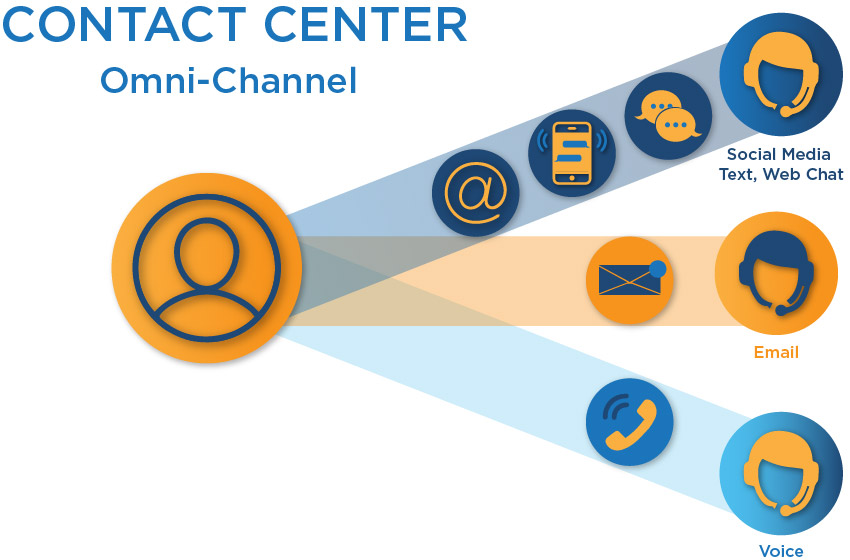Evolution of the Call Center
By Rick Akey
“What is a Contact Center?” is one of the most frequent questions that I am asked by clients and prospects.
My answer is usually, “A Contact Center is a Call Center that has evolved and adapted to the 21st century’s communication methods.”
Call Centers have existed for well over 50 years, providing customer service to clients who call into a designated customer service number. These customer calls are then routed via an Automatic Call Distribution (ACD) to an available agent.
More recently, the Call Center has adopted self-service options using Interactive Voice Response (IVR). IVR allows customers to select from a menu using touch tone and/or voice input to access a database of information without interacting with an agent. This is accomplished by Application Program Interfaces (APIs) that provide secure polling of databases and then present that data to the customer. If a customer needs to speak with an agent, the call can be passed to the ACD system.
So, what is a Contact Center?
Let’s start with looking at how we communicate in the 21st century. Almost everyone over the age of 12 has a smartphone and uses the Internet. We text, email, WhatsApp, Facebook, Tweet, Instagram, and Snapchat with one another. Only occasionally do we use that smartphone to make phone calls.
Why would a company staff their support center with teams of agents sitting by the phone waiting to hear from customers when many of those customers would rather communicate in other ways?
A Contact Center provides customers a choice between multiple support channels. Agents can handle texts, email, webchats, social media, and phone calls. This solution, omni-channel routing, satisfies the customer by allowing them to use their preferred method of communication. The solution is also advantageous for the service provider because it provides less expensive and more efficient methods of handling customers’ requests.
Contact Center omni-channels can also leverage self-service methods using Chat-Bots and Visual IVR, in addition to the legacy call-based IVRs. All methods allow the client to obtain answers to their questions through direct secure access to the data or be directed to an agent trained in the topic of inquiry.
A Contact Center agent can be assigned to multiple channels simultaneously or can be dedicated to one channel that best meets their skill sets.
For instance, one agent can handle multiple text, social media, and web chat communication channels simultaneously without sacrificing customer satisfaction. The skillsets for these channels are very similar. The client is expecting near real-time responses on these channels.
Email is different than text/chat channels. There is an expectation of correct spelling, punctuation, and grammar with email, that requires a certain skill set. While response time is still a factor, an immediate real-time response is not normally expected.
Of course, there still needs to be a voice channel. Agents could be dedicated to this channel or assigned to email as well.
Finally, the Contact Center communication channels are managed with methodology like the legacy Call Center. The communication channel queues can be prioritized by importance of customer, worked via First-In/First-Out, etc. Customer satisfaction and operational efficiency metrics can be measured in each channel and used to obtain actionable results to improve the business.
In future posts, we will take a deeper dive into Cloud-Based Contact Centers, Workforce Optimization Tools, Natural Language Understanding, and some of the exciting new technologies that improve Customer Experience.
If you want to explore migrating your Call Center to a Cloud Contact Center environment, Crystal Technologies will provide an evaluation of your business requirements and assist with developing and implementing the right Contact Center strategy for your business.








